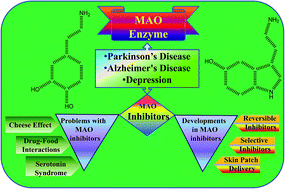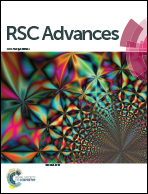Recent developments on the structure–activity relationship studies of MAO inhibitors and their role in different neurological disorders
Abstract
Monoamine oxidase (MAO) enzyme catalyzes the oxidative deamination of xenobiotic and endogenous amines including many neurotransmitters. The MAO enzyme exists in two isoforms; MAO-A and MAO-B and these isoforms display considerable sequence similarity but differ in tissue distribution, inhibitor selectivity and specificity towards ligands. The altered concentration of the neurotransmitters in the brain is linked with the biochemical pathology of various neurological disorders including depression, Alzheimer's disease and Parkinson's disease. MAO inhibitors were the first antidepressants discovered but their irreversible binding to the enzyme resulted in a number of side effects including fatal food–drug interactions. The new generation MAO inhibitors, especially reversible and selective inhibitors, were less toxic and found to be effective against various neurological disorders. Now the MAO enzyme has been recognised as an important drug target and MAO-A selective inhibitors are being developed as drug candidates for the management of depression and anxiety disorders, whereas MAO-B selective inhibitors are found to be effective for the treatment of Parkinson's disease and Alzheimer's disease with a better safety profile as compared to nonselective MAO inhibitors. The current review article describes recent developments on the design, synthesis and screening of MAO inhibitors, structure–activity relationship studies, and their role in the etiology and treatment of various neurological disorders.


 Please wait while we load your content...
Please wait while we load your content...